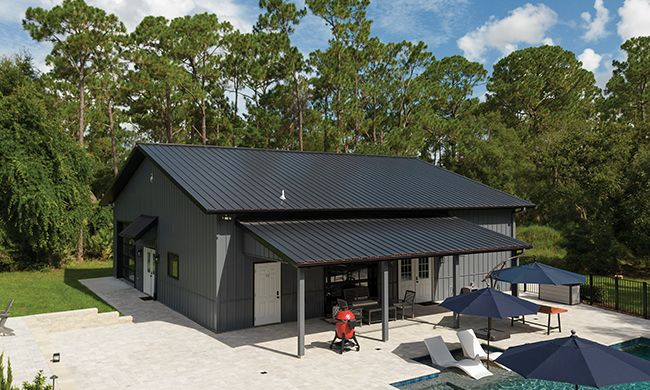
Upgrading Your Oasis
Picture this: You’ve purchased your home. You’re on the land you’ve dreamt about and you’ve got great ideas to turn your property into the personal oasis you’ve always wanted.
As you consider developing your land, building with environmentally sensitive choices becomes more important than ever. According to LightStream’s 9th Annual Home Improvement Trends Survey, more than 93% of homeowners see the benefits of undertaking renovations that have positive environmental impacts. Yet, one of the top barriers to making eco-friendly upgrades is that people don’t know what to do (27%) nor where to begin (24%).*
As a first step, homeowners can take on renovations to make their existing home or building greener. Among the many smaller-scale eco-projects are new insulation, HVAC systems, lighting or appliances.
“One popular upgrade is installing custom windows and doors that are thermally broken, meaning they’re designed to keep out cold or hot temperatures,” said Sean Cain, president of Morton Buildings, a specialized construction company with decades of experience in eco-conscious construction. “It’s a big improvement that is not only energy-efficient, but it will immediately impact the overall comfort of your building and save money on energy expenses.”
Reflecting larger visions, the survey also found that many homeowners are thinking outside the home itself, enhancing their properties by adding a separate garage, hobby shop, barn, office or accessory dwelling unit.
“Today’s homeowners are looking for a solid property improvement investment as well as construction specialists with the unique knowledge and know-how to deliver eco-friendly best practices and sustainable products,” said Todd Nelson, senior vice president at LightStream, an online lending division of Truist Bank.
In addition to return on investment and environmentally sustainable upgrades, homeowners are also increasingly interested in the longevity of their improvement projects.
“People today are keenly interested in the long-term sustainability of their building decisions including construction of ancillary buildings on their property,” Cain said. “Post-frame buildings with steel exteriors have advantages both for longevity and recyclability whereas shingle roofs or vinyl siding may need replacement more frequently, which often results in additional waste that cannot be recycled. Moreover, they have protective benefits as well, helping to mitigate inclement weather and extreme climate events. Most of all, their design flexibility makes them modern and stylish.”
FROM START TO FINANCE
Sustainability begins with material selection and production.
“There are many ways to make the manufacturing processes more sustainable, such as recycling or repurposing unused or misdirected materials and even capturing and reusing water,” Cain said.
Managing the Costs
Sustainable building options can also be more affordable, particularly if you’re looking at cost savings over time.
“Reducing energy costs is important to many building owners,” Cain said. “Make sure your building or home is well-insulated because this can save you a considerable amount of money.”
Consider the Options
As consumers seek sustainability in their residential structures, more are considering their long-term financial impacts, too.
“We’re in era of rising interest rates,” Nelson said. “A fixed rate loan can save money and be the right choice for many reasons.”
Visit LightStream.com to see how unsecured, affordable home improvement loans can help finance your renovation.
* The 9th Annual LightStream Home Improvement Survey was distributed by Ipsos among 1,301 U.S. homeowners, between January 4, 2022 and January 13, 2022.
Truist Bank is an Equal Housing Lender. Member FDIC.
Photos courtesy of Morton Buildings, Inc.
SOURCE: Morton Buildings and LightStream






